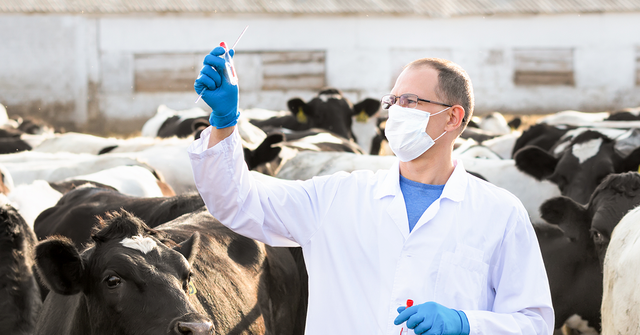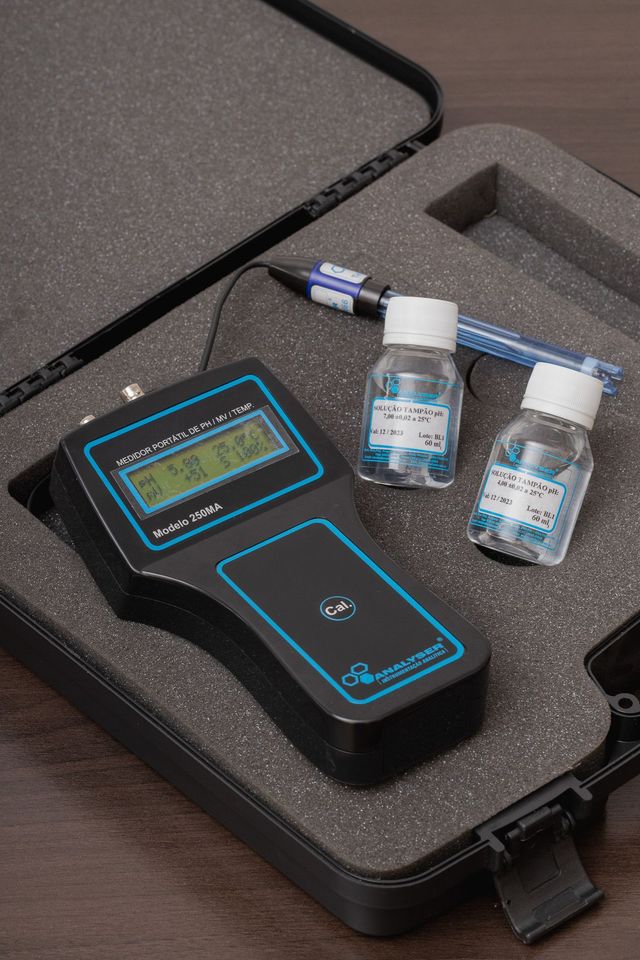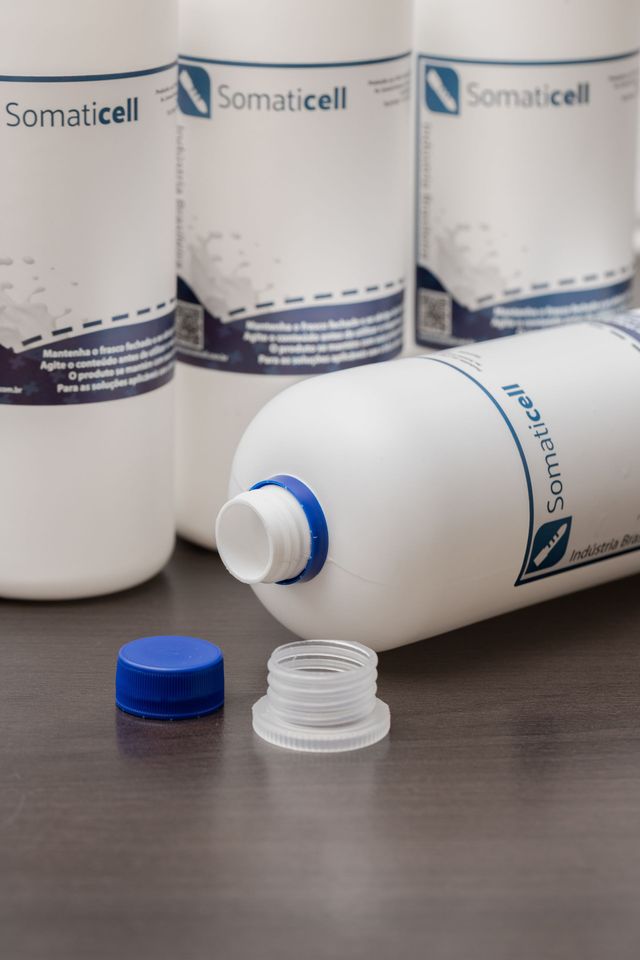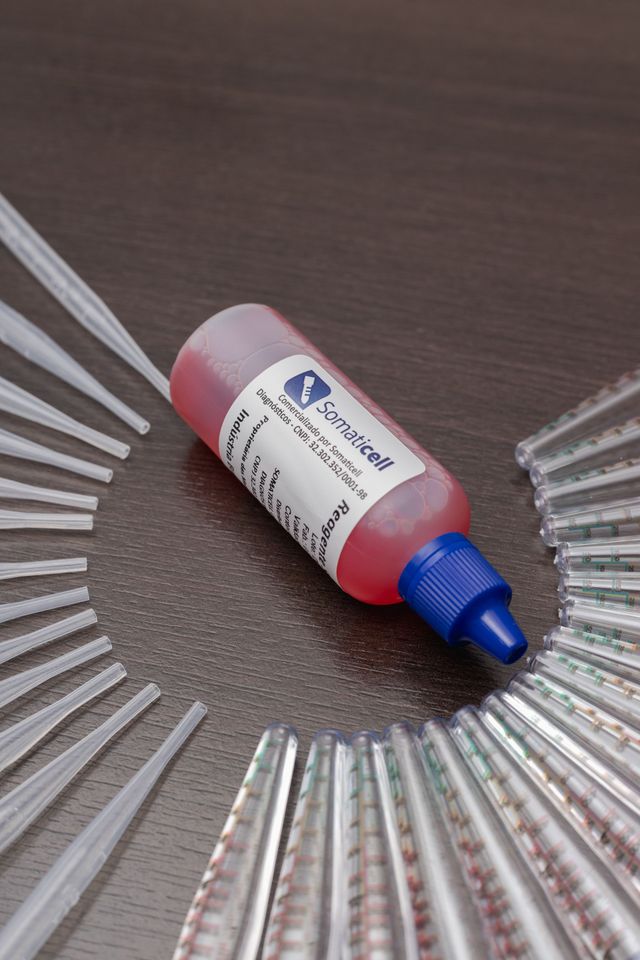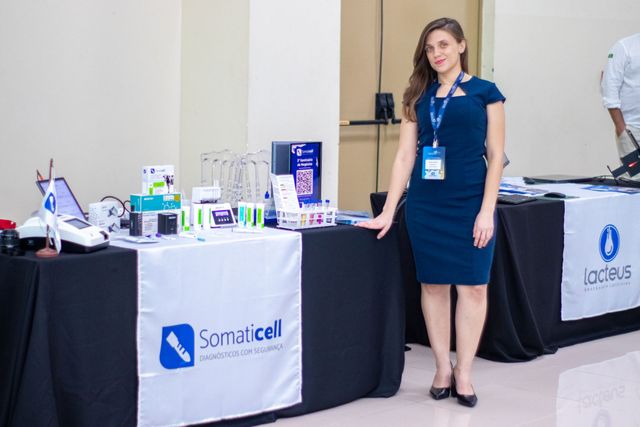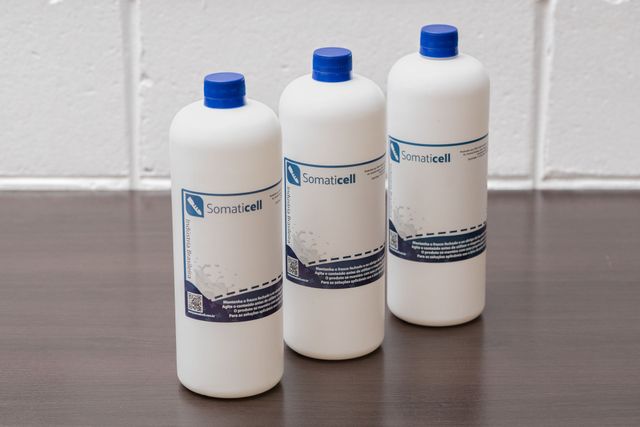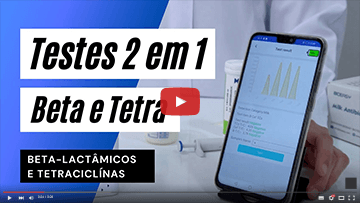Methods of diagnosing mastitis: see this comparison
Early diagnosis is an aspect that helps a lot in the fight against bovine mastitis
A mastite bovina caracteriza-se como a doença que mais acomete o gado e interfere na produção leiteira.
As bactérias causadoras dessa doença são responsáveis por alterar a qualidade do leite ao modificar a composição dele e, por consequência, interferem no negócio em torno da indústria do leite e seus derivados.
For this reason, the prevention and fight against mastitis must be significant, in order to avoid or treat the disease as quickly as possible, in order to reduce its impacts on the herd.
Nesse sentido, um aspecto que auxilia bastante no combate à mastite bovina são os diagnósticos precoces. Isso ocorre pois a partir dos métodos de diagnóstico de mastite, é possível identificar a causa da doença e escolher as melhores medidas de tratamento, assim como a aplicação de antibióticos corretos para a cura dos animais, eliminando os patógenos.
In this article, a comparison of methods for diagnosing mastitis will be made in order to provide knowledge for dairy farmers who are concerned about their cattle.
Therefore, if you want to understand a little more about the disease, the benefits of an assertive diagnosis and compare methods to identify mastitis, be sure to check out this reading.
- Understand what mastitis is and its types
- Why Mastitis Needs Fighting
- Comparison between disease identification methods
- How important is an accurate diagnosis?
Understand what mastitis is and its types
Mastitis can be clinical or subclinical, with or without apparent symptoms. This inflammation of the glands directly affects the health of the cows and their milk production. See below about the two types of mastitis:
Clinical mastitis
This mastitis is less common than subclinical mastitis. It affects cows and renders milk unusable, as milk is contaminated with blood and pus derived from the infection.
In addition, other symptoms are apparent in the animal itself, such as increased temperature, change in behavior and redness in the udder.
Although milk cannot be used when a cow or herd has this mastitis, due to the fact that changes in milk make consumption harmful, treatment can be faster.
Subclinical mastitis
Unlike the first mastitis, this type of disease requires greater attention precisely because it has no apparent symptoms. Redness, change in behavior and other symptoms presented in clinical mastitis do not occur in subclinical mastitis.
In fact, the only visible aspect that introduces the possibility of subclinical mastitis is attention to the amount of milk supplied.
This is because, although this type of mastitis does not pollute the milk with blood or pus, it directly affects milk production, which has a high level of somatic cells. The level of these cells is the main indicator of the disease and, therefore, the test used to identify it is called CCS: Somatic Cell Count test.
Why does mastitis need to be fought?
When a cow acquires the infection, nutrients that used to go from blood to milk are now destined to combat mastitis. In addition, the animal's defense system performs the phagocytosis of bacteria, which modifies the composition of the milk, a process that mainly affects the level of proteins in it due to the presence of proteases.
Isso causa um impacto não apenas na qualidade do líquido, mas também de seus derivados. O queijo é um derivado do leite que tem um importante papel da caseína (principal proteína do leite), que é desnaturada e solidificada durante o processo de fermentação.
In addition to quality, mastitis affects the amount of milk produced by animals. In this context, when a cow becomes infected with the disease, the milk level may not be so affected. However, considering the entire chain of cows, if mastitis is not treated, the other animals in the herd will be infected, and thus, the milk producer may have a significant loss of his product, reaching about 10 %. At the end of lactation, 10% of production can be quite expensive within the dairy industry, isn't it true?
As if the quality and quantity of milk production were not enough impacts for the herd owner, there is still concern about the health of the cows. If treatment is not given in time and properly, mastitis can lead to the death of the animals.
Therefore, it is essential to keep an attentive and supervisory eye on the cows and the milk. In addition, prevention must be carried out throughout the handling with hygiene of the cows and also of their living spaces, fundamental measures to avoid contagious mastitis.
Mastitis diagnostic methods
As seen, clinical mastitis presents symptoms, and for this reason, it is enough to know and be attentive to the signs that refer to the disease. It is also possible to use a sieve to identify possible buds or pus that form in the first jets of milk or use a container with a black background to better visualize the appearance of the liquid.
In the case of subclinical mastitis, however, it is not so easy to identify. For this, it is necessary to apply tests to identify the disease through the somatic cell count. Methods for diagnosing subclinical mastitis require microbiological examinations, indirect chemical methods using reagents, and somatic cell counts in milk from individual mammary quarters or from the herd.
Some possibilities of tests for the diagnosis of mastitis are: the California Mastitis Test (CMT), the Wisconsin Mastitis Test (WMT), the Somaticell CCS and the electronic somatic cell count. In the following topics, it will be possible to learn a little more about some of these tests, aiming at a comparison between them and the provided diagnosis.
California mastitis test (cmt)
This test is very practical and can be done in the milking space itself by a properly trained professional. The CMT uses a reagent to identify the result. From observation, after meeting and mixing milk and reagent and the correct waiting time, it can be inferred whether the cow has inflammation or not. The reaction between the reagent and the genetic material of the somatic cells present in the milk will form a gel and the concentration of this reaction is proportional to the number of somatic cells. Despite being a widely used test due to its low cost and fast results, the CMT provides subjective information and in some tests it is possible that the result presents false-negatives or false-positives, configuring it as not so safe.
Methods of diagnosing mastitis: Somatic Cell Count Test (SCC)
Decerto, esse é o teste mais utilizado, e também o mais assertivo no processo de identificação da mastite. Além de indicar o número de células somáticas a fim de identificar a doença subclínica, o teste CCS também infere sobre a qualidade higiênica do leite. E é possível utilizá-lo como base de controle de sanidade do seu rebanho. Ele pode ser feito através de análises microscópicas ou testes mais modernos e práticos, como o teste de CCS da Somaticell.
This test offers an assertive result, as mastitis directly affects the increase in somatic cells in milk. This occurs because there is a greater evasion of leukocytes from the blood of cows to the mammary glands, in addition to the cells derived from the desquamation of the glandular epithelium also contributing to this increase.
Comparison of mastitis diagnostic methods
Ao realizar uma análise é possível identificar algumas vantagens do método de contagem de CCS com relação ao CMT e ao WMT. Entre elas, está o fato de que a CCS não apresenta a subjetividade do CMT. A CCS pode ser feita através da contagem eletrônica em laboratório, para isso a amostra deve ser mantida refrigerada durante todo o tempo de chegada ao laboratório até onde será realizada a análise.
O Somaticell CCS é um teste rápido que pode ser feito em campo, ao pé da vaca ou do tanque, sem necessidade de refrigeração ou transporte da amostra, e ainda com precisão de 97% na contagem de células somáticas em relação à contagem eletrônica, fornecendo um resultado preciso e rápido, em milhares de células somáticas por mL de leite.
What is the importance of an assertive diagnosis?
Avoiding and combating mastitis must be the pillars of the producer's planning. This is because it is a frequent and harmful disease both for the health of the herd and for the financial scope of a livestock leader. In serious cases, it is possible that the entrepreneur will lose some cows from his cattle if the diagnosis and treatment are not correct and effective.
For this reason, opting for a less expensive diagnostic method for mastitis is not always more advantageous. In reality, the more assertive the test, the better the treatment provided with the correct information to care for your cattle. After all, mastitis diagnostic tests, such as somatic cell counts, are investments!
As seen in the previous topic, everything that involves a good routine and quality of life for your herd should be seen as part of the process of managing livestock and also as an investment. Because, in short, at the end of lactation and sale of milk and its derivatives, the return is guaranteed if the milk is of higher quality and quantity.
Somaticell CCS test
As seen, the CCS test is the best option for diagnosing subclinical mastitis in your cattle. Although CMT is the cheapest of all, it does not mean that you cannot be cost-effective by opting for the somatic cell count test. This is because the Somaticell, a company with more than 30 years of experience in food safety, has prepared an accessible, practical and efficient test for you.
O teste Somaticell CCS é feito com o intuito de entregar, de maneira segura, o resultado que o gestor da pecuária precisa para cuidar do seu rebanho.
O teste da Somaticell é moderno, rápido e com resultados numéricos com correlação de 97% com a contagem eletrônica de células somáticas. Ele foi feito para entregar os resultados em menos de 3 minutos. É possível aplicar o teste no campo com o desempenho comparável ao da contagem eletrônica feita em laboratórios. Com isso, o teste oferece praticidade e versatilidade. Ele otimiza o tempo e o dinheiro do produtor. E assim, acelera o processo de cura dos animais, bem como indica o grau de qualidade do leite.
Somaticell CCS Test Kits
A Somaticell oferece duas opções de kit de testes CCS para o diagnóstico de mastite bovina, um kit com 20 unidades e outro com 100 unidades. Entre em contato e solicite um orçamento!
The Somaticell test kit contains the following items:
- Reagent;
- Graduated tube with scale in thousands of somatic cells and milk quality indication (pH indicator);
- Pipette for collecting the milk sample;
- Rod for mixing the reagent with the milk and a cap with a calibrated hole for draining the liquid.
With these components, the producer can carry out the entire process up to the diagnosis.
So, did you like the information? We provide a lot of content on our blog, so you can learn more about the health of your herd.
Entre em contato com a gente e fale com um de nossos especialistas! Com a Somaticell, a sua cadeia produtiva de leite nunca mais será a mesma!
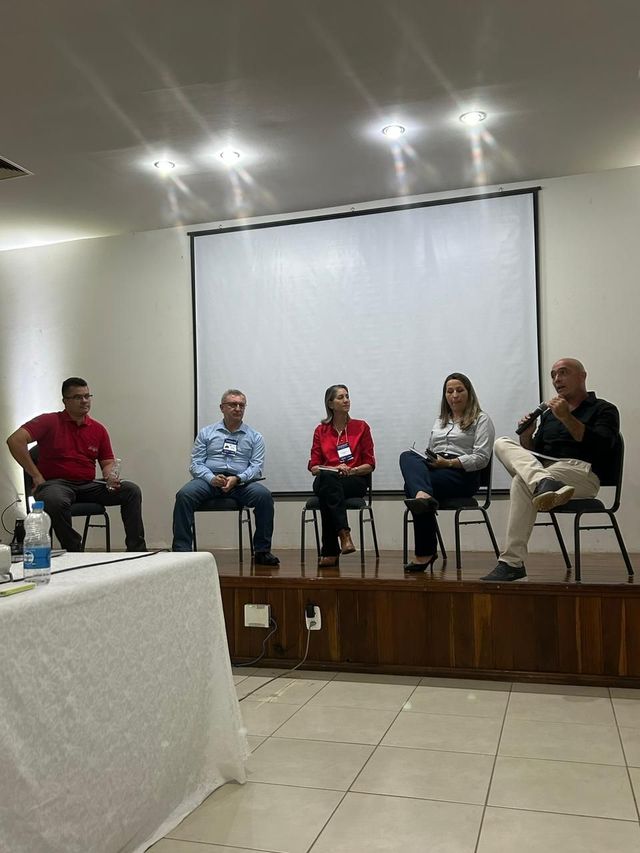
Conheça nosso App
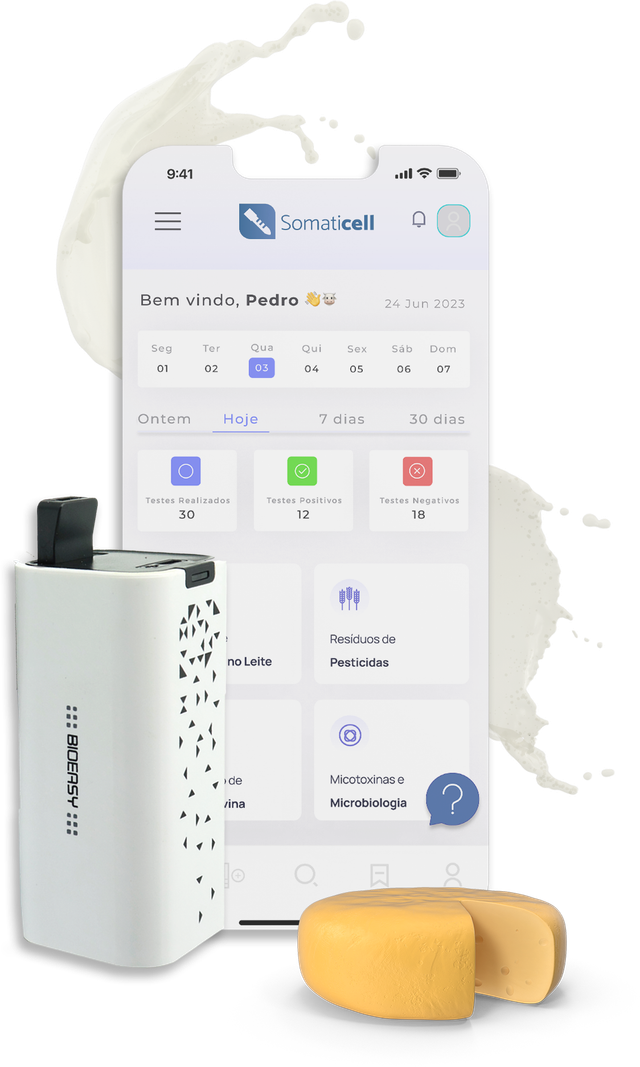
Our Educational Videos
Somaticell on Social Networks


